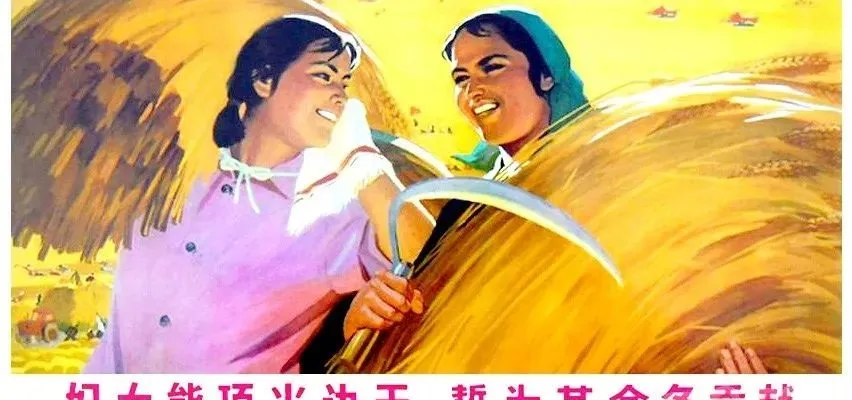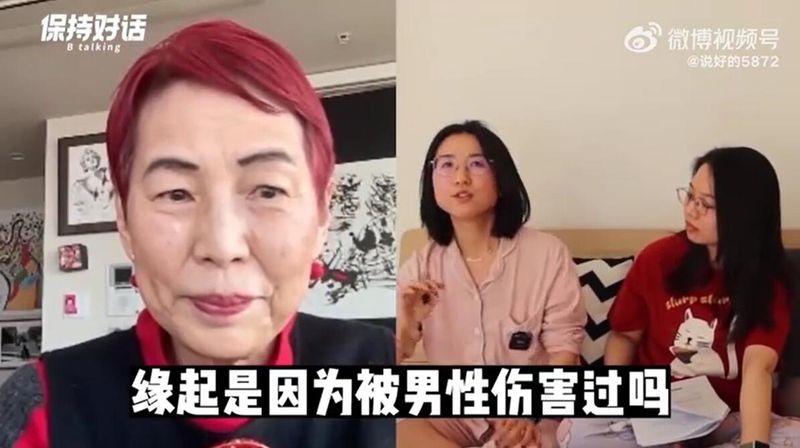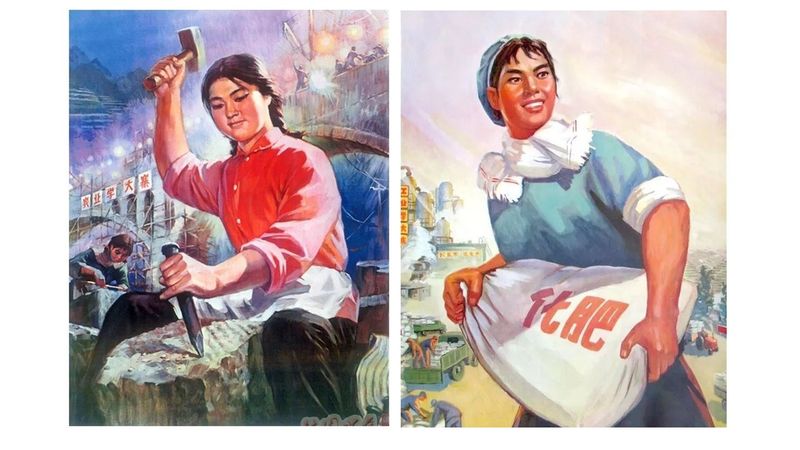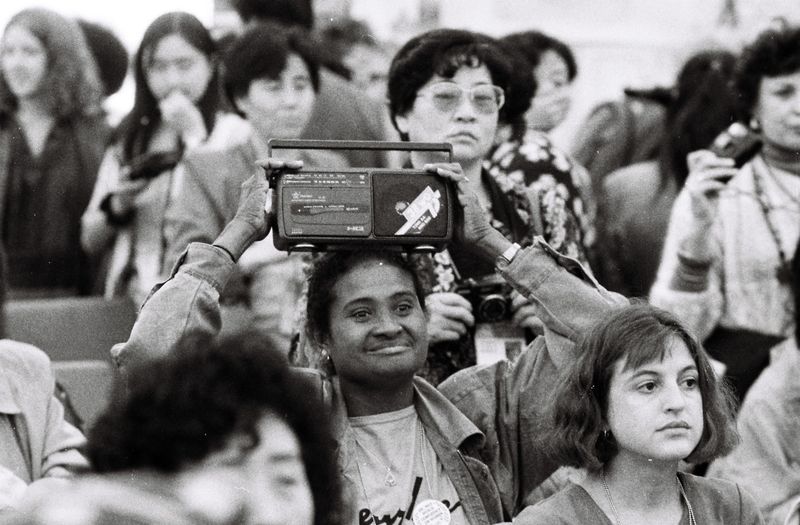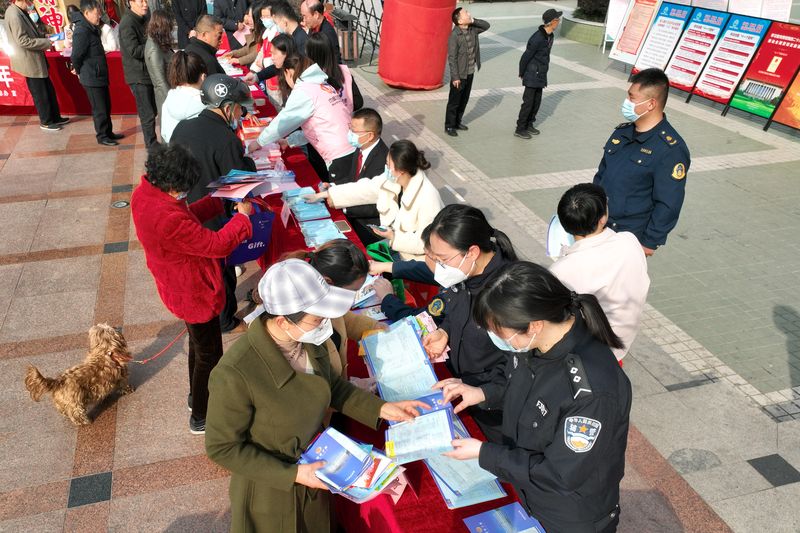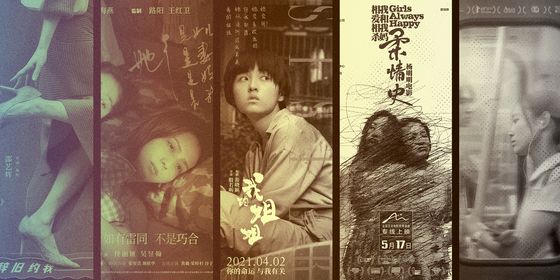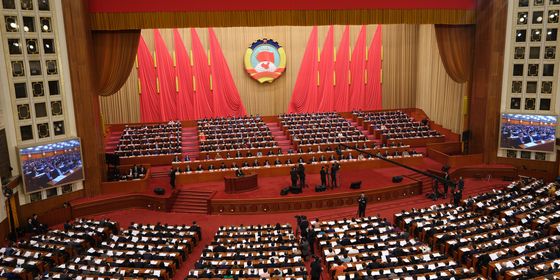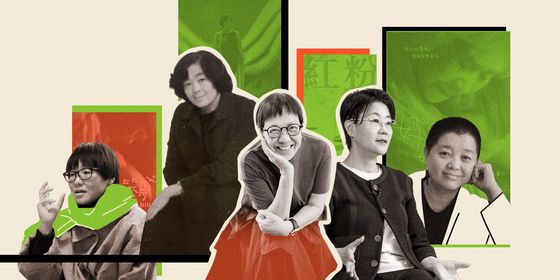A brief history of modern Chinese feminism: From anti-foot-binding marches, to the viral sexual harassment cases, and the struggle for reproductive rights
In 1931, the whole of China was astounded when Wenxiu, the concubine of China’s last emperor Puyi, declared in major newspapers that she had filed a lawsuit to divorce the emperor. Just months earlier, in December 1930, the government of the Republic of China (1912 – 1949) had enacted a new marriage law which guaranteed freedom of choice in one’s marriage partner for both men and women for the first time in Chinese history. This “consort’s revolution” made a huge stir at the time, and inspired many Chinese women to make their own choices over marriage in the decades to come.
Nearly 100 years later, marriage and family continue to be major concerns within Chinese women’s movements today. Last month, blogger Quan Xixi and two of her classmates at the elite Peking University had the opportunity to interview leading Japanese feminist scholar Chizuko Ueno, and were lambasted by Chinese netizens for focusing on “shallow and offensive questions” such as why Ueno was unmarried, and whether that was because she has been “hurt by men.” Quan and her classmates also expressed their concerns of being judged as “imperfect feminists” because all of them were married, compared to Ueno, whom they called a “flawless feminist.”
The video of the conversation soon reached more than 10 million views after its release, with critics online disappointed that the interviewers’ elite educational backgrounds didn’t lend themselves to more interesting discussions. Yet some feminist internet users offered a different take: “There is no lack of feminists who are more capable of having deeper conversations with Ueno in China,” stated a Weibo user under the handle AstralDrop, yet those individuals have had their social media accounts closed down, and some have even relocated abroad. “[Marriage] is the only kind of feminism-related topic that is allowed to trend online nowadays.”
It’s no secret that calling oneself a feminist in China today comes with certain political as well as social baggage. Online, the space for discussion is shrinking, notably with around a dozen feminist discussion forums shut down on Douban, a popular networking platform for books, music, film, and alternative cultures, for promoting “radical” and “extreme” views in 2021. Netizens also reported stand-up comedian Yang Li to China’s broadcasting regulators for “sexism, spreading hatred, [and] instigating social conflict” due to punchlines like “do men have a bottom line?” in 2020, and continued to harass her the following year for promoting “opposition between genders.” Feminist responses to current events and social trends risk being labeled “女拳,” an insult similar to the English term “feminazi” that replaces the second character in 女权 (women’s rights) with the character for “fist.”
Yet it wasn’t always this way. Over the last century, feminist movements have often been seen as integral parts of China’s nation-building and modernization processes, rather than threats to social stability. Early female empowerment movements also concerned themselves with much more than marriage, romance, and family. Modern feminism in China could be dated back to the late Qing dynasty (1616 – 1911) when, after China’s humiliating defeats first in the First and Second Opium Wars and then the First Sino-Japanese War of 1894 to 1895, the Guangxu Emperor and several intellectuals started a campaign known to history as the “Hundred Days’ Reform” from June to September of 1898, enacting a series of policies meant to modernize the empire culturally, politically, and educationally.
Liberating women was one significant area of reform. During this period, leading reformer Kang Youwei (康有为) formed several “foot emancipation societies” in cities like Guangzhou and Shanghai, which led women to demonstrate in the streets against the tradition of foot-binding. In 1897, female revolutionaries Li Run and Huang Jinyu founded the Chinese Women’s Society, widely considered China’s first modern feminist organization. The following year, the Shanghai-based society founded the first Chinese school for females and Women’s Journal, China’s first newspaper published for female readers, which championed values like gender equality, education for women, opposition to foot-binding, women’s participation in politics, and freedom of choice in marriage.
Female revolutionaries and feminists also contributed during the Revolution of 1911 that ended the Qing dynasty. Tang Qunying, the first female member of the Chinese Revolutionary Alliance (the precursor to the Nationalist Party that would eventually rule the Republic of China) formed a female army that participated in overthrowing the Qing, but also founded the Chinese Women’s Suffrage Alliance in 1912 to fight for women’s political rights after realizing that gender equality was not written into the Interim Provisional Constitution after the founding of the Republic of China.
Female liberation in this period was encapsulated in the character Nora from Henrik Ibsen’s play The Doll’s House, translated versions of which began widely circulating in China starting from 1918. The character “wakes up,” realizes she has been nothing but an object to first her father and then her husband her whole life, and walks out of her husband’s home at the play’s end. This encapsulated the yearning for choice and opportunities outside of home and family among feminists of the Republic era.
It was a period that saw more women obtain an education and careers outside the family, more schools and publications founded for women, and more female participation in social affairs. Yet as writer Lu Xun (鲁迅) pointed out in his 1923 speech “What Happens After Nora Walks Out?” these individual struggles for empowerment and freedom don’t mean much without fundamental changes in the economic resources and power wielded by women both in the family and in society. Believing that Nora would “either die or return home,” Lu Xun stated that changing the distribution of economic power in society may be even more difficult than championing female liberation and political participation, as it touches more people’s bottom line—hence, he advocated for change to start in the family (what he called a “limitless” source of power in China), with parents leaving their resources equally to sons and daughters.
It was not until the founding of the People’s Republic of China (PRC) in 1949 that female liberation was put on the official national agenda. National leaders and state-media popularized the phrase “women hold up half of the sky” and advocated for women to join the construction of a new China, lending their weight to socialist production. From the 1950s, women were encouraged to enter the workforce in traditionally male-dominated fields such as factory work and farming, and dress the same way as men. According to The Paper, between 1957 and 1958, 90 percent of the female population joined the labor force, 10 times more than during the Republican era.
Women’s health care, however, had yet to catch up with women’s increased political importance, with many women continuing to do heavy labor work during pregnancy, menstruation, and malnutrition. Research by the Health Department of Hebei found that in March 1961, 2 million of the province’s 11 million women had stopped menstruating, and 162,480 women suffered from prolapsed wombs to various extents.
Starting from the 1970s, women’s reproductive decisions also came onto the national agenda with the family planning policy, widely known as the “one-child policy,” for the next half-century. Much harder to limit and slower to change were sexist cultural attitudes that cause families to continue to prefer boys to girls, leading to gender-selective abortions (finally banned in 2002), infant abandonment, and other elaborate methods to evade birth restrictions in order to have a boy. This has created a severe gender imbalance, particularly in more conservative regions and rural areas (where a couple could have a second child if their first was a girl), with the national census showing 121.2 boys born for every 100 girls at the peak of the disparity in 2004—leading to an estimated 24 to 34 million more boys born than girls in the last 30 years.
In the post-reform period, non-governmental groups and movements championing feminist and female-oriented causes began to flourish. In 1995, the UN’s World Conference on Women was held in China with the slogan “Action for Equality, Development, and Peace.” This was the first such event that China had ever hosted, and it saw the passing of the The Beijing Platform for Action that advocated for improvements to women’s rights in a dozen key areas such as overcoming poverty, avoiding gender-based violence, receiving education, and having more women participate in decision-making in business and politics. The Action also for the first time added women’s autonomy in sex into their basic rights. A parallel event, the NGO Forum on Women ‘95, was held in late summer in Beijing’s Huairou county. Around 1,300 non-governmental organizations attended, making NGOs and public figures championing female empowerment more visible in Chinese society.
NGOs such as Feminist Voice, founded by Lü Pin in 2009, have been influential since then with actions like initiating a boycott of CCTV’s Spring Festival Gala after they calculated 44 instances of gender discrimination during the show in 2015. But with public forums coming under increasing scrutiny from authorities, the legal system has become an important avenue for ordinary individuals to challenge the gender inequality that continues to affect many women’s lives. Plaintiffs like Cao Ju in 2012, Huang Rong in 2015, and Gao Xiao (pseudonym) in 2016 have successfully sued companies that refused to hire them based on their gender. On the other hand, Zhou Xiaoxuan, better known as Xianzi, lost her high-profile sexual harassment case against Zhu Jun, a host with state broadcaster CCTV, in September 2021, and an appeal in August 2022.
Meanwhile, in 2016, the PRC’s new Anti-Domestic Violence Law brought domestic abuse under the legal system for the first time and allowed victims of domestic violence to apply for restraining orders against their abusers, and made it mandatory for authorities to take formal action in cases of suspected abuse. Around 6,000 restraining orders had been issued nationwide as of late 2020.
Tragic and shocking incidents have also been catalysts for change. In 2021, an employee of major technology firm Alibaba accused her male boss of getting her drunk at an event with a client, then sexually assaulting her after. The ensuing discussion, and Alibaba’s initial lack of response to the incident, drew attention to a provision in China’s Civil Code, which went into effect in January of that year, highlighting that companies (including schools) have a responsibility to take preventative measures and conduct investigations in cases of reported sexual harassment.
Incidents from 2022, such as the discovery of a trafficked woman chained to a shed in Xuzhou, Jiangsu province, and the brutal assault of four women at a barbecue restaurant by a group of men in Tangshan, Hebei province, led to outcries for increased protection of women’s safety, sexual autonomy, and reproductive rights, and better enforcement of existing regulations on these matters.
Even an incident on the high-speed rail last September, in which a female passenger discovered she could not buy sanitary napkins on trains, and was then told by rail authorities that this was a “private” item rather than a public need, sparked discussions on how many women’s struggles are overlooked by mainstream society. In rural China, 2022 also saw greater visibility in the struggle of chujianü (出嫁女), rural women who are fighting to keep their land rights after marriage, highlighting the diversity in the struggles women face both in the cities and the countryside.
“Since the 1920s, feminism has been something that has been state-driven, until after 1995, when independent women’s groups appeared,” says gender activist Feng Yuan, co-founder of the NGO Beijing Equality. “For the last decade or so, with the development of the internet, more and more are considering themselves to be feminists, and advocate rights for women and gender equality.”
Still, younger feminists have an uneasy relationship with the marriage and family-centered focus of mainstream discussions about women’s rights and status. “To keep yourself safe, oppose marriage and reproduction!” goes a slogan online that began trending in the wake of various incidents of domestic abuse in the news and the Tangshan assault, where some felt dissatisfied that the gender dimension of violence was subsumed under calls for better law enforcement. At the same time, the Bureau of National Statistics revealed in January this year that China’s total population in 2022 has dropped for the first time in six decades, and how to encourage more births has been a major area of focus for the state, which relaxed its family planning policy (already toned down to allow all families to have two children in 2016) to becoming a “three-child policy.”
Issues like inability to find childcare, salary discrimination, and lack of competitiveness in the workplace discourage working women from having more children (or even just one). In Sichuan in February, authorities approved a policy that will guarantee that children of single mothers receive the same rights and social benefits as those with two parents. It’s a move that may make it easier for women to have children, but was also hailed by the public as a sign of growing societal acceptance of women’s reproductive autonomy and the multifaceted role of women.
“Chinese feminism is developing in a direction of greater diversity. It recognizes the official direction set by the All China Women’s Federation, but women’s situations and needs are varied and cannot be fit into boxes,” says Feng. “Autonomy and choice are at the core of the feminist movement.”
The battle never ends.





